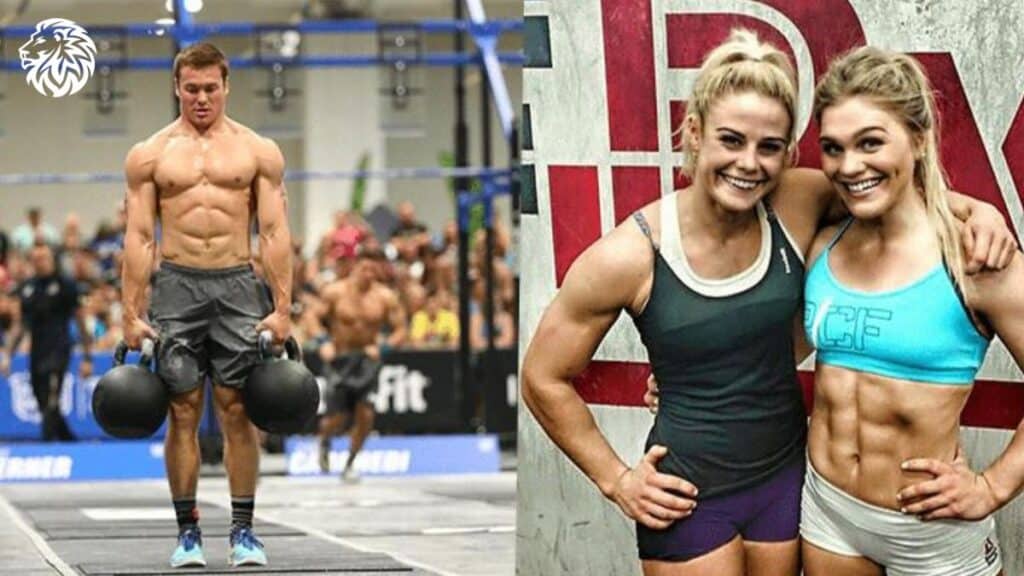Getting a chiseled six-pack abs is a dream for many. Besides being a fitness badge of honor, it also lends a solid core strength that makes moving easier and postures better. But remember, crafting that perfect abs is a marathon, not a sprint. It needs commitment, consistency, and a holistic game plan.
This article is your easy-to-follow 3-step playbook to scoring those abs. The game plan circles around eating clean, sticking to a regular exercise routine with an emphasis on core workouts, and allowing yourself enough downtime for recovery. All these elements are fundamental in molding those enviable abs.
No sugarcoating, getting a six-pack requires a major lifestyle change. But with this guide at your disposal, your road will be as clear and hassle-free as it gets. And remember, every little progress is still progress. So let’s kickstart this journey to a fitter, stronger version of you.
Understanding The Core
Before you begin your journey towards achieving a six pack, it’s essential to understand the anatomy of the abdominal muscles and the role they play. Your “core,” a term often used to describe the torso, includes several muscle groups that are crucial to both movement and stability.
The Rectus Abdominis is the most well-known of these muscles. It runs vertically down the front of the abdomen, and when body fat levels are low enough, this muscle’s outline gives the appearance of the ‘six pack.’ But the core includes more than just this famous muscle group.
Other important muscles in your core include the External and Internal Obliques, which run diagonally across your sides, and the Transverse Abdominis, a deep muscle that wraps around the torso, providing stability and support. The lower back muscles are also part of the core, providing balance and counter-support to the abdominal muscles.
Working towards a six pack often emphasizes the Rectus Abdominis, but a truly strong and functional core requires a more holistic approach. This means that your exercise regimen should also target the other core muscles. Focusing only on the Rectus Abdominis might give you the six pack you desire, but neglecting the other core muscles can lead to imbalances, potential injuries, and may not enhance your overall strength and stability.
Understanding the anatomy of your core and the roles of its various muscles is fundamental in your journey to a six pack. More than aesthetic appeal, a strong, balanced core offers stability, strength, and functionality that permeates every aspect of your movement and posture.

Step 1: Nutrition
The first step towards achieving a six-pack is adopting the right nutrition strategy. Your diet significantly influences both body fat reduction and muscle growth, laying the foundation for visible abs.
Importance of Diet in Body Fat Reduction and Muscle Growth
- Macronutrients: Proteins, Carbohydrates, and Fats: In the nutritional hierarchy, proteins, carbohydrates, and fats – the macronutrients – hold prime importance. Proteins are vital for muscle repair and growth, aiding in the development of your abs. Carbohydrates provide the energy needed for your workouts and daily activities, while fats, especially unsaturated fats, support hormone production and overall health.
- Hydration: Alongside macronutrients, staying well-hydrated is crucial. Water plays a key role in maintaining muscle function, aiding digestion, and promoting overall health. Proper hydration also enhances muscle definition, highlighting your six-pack.
Recommended Dietary Changes for Six Pack Abs
- Reduction of Processed Foods and Sugars: A significant change that can pave the way for a six-pack is reducing your intake of processed foods and sugars. These often lead to increased body fat and can mask the visibility of abdominal muscles.
- Increased Intake of Lean Proteins, Fruits, and Vegetables: Replacing processed foods with healthier options can make a considerable difference. Increase your intake of lean proteins, such as chicken, fish, tofu, and legumes, to support muscle growth. Incorporate a wide variety of fruits and vegetables for their fiber, vitamins, and minerals.
- Importance of Portion Control: Even with healthy foods, portion control is key. Overeating any food can lead to weight gain, making it harder to achieve a lean physique. Learn to gauge your hunger and fullness cues and tailor your portion sizes accordingly.
Examples of Healthy Meals and Snacks
Implementing these dietary changes might seem daunting, but here are some meal and snack examples to guide you:
- Breakfast: Greek yogurt with mixed berries and a sprinkle of chia seeds.
- Lunch: Grilled chicken salad with a variety of vegetables and a light olive oil dressing.
- Dinner: Baked salmon with a side of quinoa and steamed broccoli.
- Snacks: A handful of almonds, a piece of fruit, or a protein shake.
Remember, individual nutritional needs can vary greatly. It’s beneficial to consult with a registered dietitian or a nutrition professional to personalize your diet according to your goals, lifestyle, and preferences.

Step 2: Exercise
Regular exercise is another vital component in your journey towards a six pack. It assists in burning off excess body fat and strengthening your core muscles, bringing you closer to your goal.
Cardiovascular Exercise
Cardiovascular or “cardio” exercise enhances your body’s ability to burn calories, contributing to a caloric deficit which is necessary for fat loss. This, in turn, makes your underlying abdominal muscles more visible.
Recommended forms of cardio that are effective for burning fat include running, cycling, swimming, and brisk walking. Ideally, you should aim to include moderate to high-intensity cardio exercises in your routine about three to five times a week, each session lasting around 30 minutes to an hour.
Strength Training
While cardio helps with fat loss, strength training is what builds and defines your muscles, including your abs. To specifically target your abdominal muscles and build that six pack, exercises such as planks, crunches, leg raises, and Russian twists can be effective.
Your strength training frequency will depend on your personal fitness level and time availability. Generally, it’s beneficial to train your core two to three times a week, allowing a day of rest between sessions for adequate muscle recovery. Start with lower intensity and gradually increase it as your strength and endurance improve.
High-Intensity Interval Training (HIIT)
HIIT has been shown to be particularly effective for achieving six-pack abs. It involves alternating between short periods of intense exercise and brief recovery periods. This type of training is great for burning fat and building muscle simultaneously.
A simple example of a HIIT workout could involve doing 30 seconds of high-intensity exercises like burpees, mountain climbers, or high knees, followed by a 30-second rest, repeating this cycle for 15-20 minutes.
Incorporating Exercises into a Routine
Incorporating these exercises into a regular workout routine could look something like this:
- Monday: Cardio (30 minutes to 1 hour) + Core strength training
- Tuesday: Cardio (30 minutes)
- Wednesday: Rest or light activity (like walking)
- Thursday: HIIT workout (15-20 minutes) + Core strength training
- Friday: Cardio (30 minutes to 1 hour)
- Saturday: HIIT workout (15-20 minutes) + Core strength training
- Sunday: Rest or light activity
Remember to start slow, listen to your body, and gradually increase your workout intensity. It’s also important to maintain proper form during your exercises to prevent injury and maximize effectiveness. Consulting with a fitness professional can be beneficial in ensuring your routine is safe and suitable for your fitness level.

Step 3: Rest and Recovery
The third step in building a six-pack is ensuring adequate rest and recovery. Contrary to popular belief, your muscles grow during rest periods, not while you’re exercising. Furthermore, good recovery practices can help promote fat loss and overall well-being.
The Role of Rest in Muscle Growth and Fat Loss
Rest periods are essential for muscle recovery and growth. When you exercise, especially strength training, you create microscopic tears in your muscles. Your body repairs these during rest, leading to muscle growth. Moreover, a well-rested body can perform better during workouts, burn calories efficiently, and maintain a healthier metabolism, all of which aid in fat loss.
Importance of Quality Sleep and Techniques to Improve Sleep
Quality sleep is a vital part of recovery. During sleep, your body produces growth hormone, essential for muscle growth and repair. Also, good sleep can help regulate your appetite, assisting in maintaining a healthy diet. To improve sleep, establish a consistent sleep schedule, create a comfortable and dark sleep environment, limit exposure to screens before bed, and engage in relaxing activities like reading or meditation.
Active Recovery Methods
Active recovery methods, such as stretching and yoga, are beneficial in promoting muscle recovery, flexibility, and mobility. These practices can help alleviate muscle tension and improve blood flow, delivering more nutrients to your muscles for repair and growth. They also aid in reducing the risk of injury.
The Role of Stress Management in Achieving Fitness Goals
Stress management is an often-overlooked aspect of achieving fitness goals. Chronic stress can lead to hormonal imbalances, disrupting sleep, appetite, and even directly influencing weight gain. Engaging in stress management activities, like meditation, deep-breathing exercises, or simply spending time on a hobby, can enhance overall well-being and complement your journey to a six-pack.
So, don’t underestimate the power of rest and recovery. Your body needs time to repair and strengthen itself. Balance your hard workouts with sufficient recovery and see the progress unfold.
Misconceptions and Pitfalls
In the pursuit of a toned, sculpted six-pack, there are common myths and potential pitfalls that can derail your progress. It’s essential to understand these to avoid unnecessary setbacks.
Debunking Common Myths About Getting Six Pack Abs
- Spot Reduction: One pervasive myth in fitness is the idea of “spot reduction” – the belief that you can lose fat in specific areas by targeting those areas with exercises. Unfortunately, this is not how the body works. While exercises can strengthen and tone the muscles in a specific area, they can’t selectively eliminate fat. Fat loss happens uniformly across the body, not just in the areas you work the hardest.
- Magic Diets: There’s no single “magic diet” that can give you a six-pack instantly. While diet plays a crucial role in fat loss and muscle growth, the best approach is a balanced diet rich in protein, complex carbohydrates, and healthy fats. Fad diets promising quick fixes often lead to unsustainable results and can negatively affect your health.
Discussing Potential Pitfalls and How to Avoid Them
- Overtraining: Pushing your body too hard without sufficient recovery time can lead to overtraining. Symptoms include fatigue, decreased performance, and a higher risk of injury. Avoid this by listening to your body, getting adequate rest, and allowing recovery days in your workout schedule.
- Neglecting Other Muscle Groups: It’s easy to become focused on your abs and neglect other muscle groups. A balanced workout routine, however, is crucial for overall body strength and function. Incorporating a variety of exercises targeting all major muscle groups can lead to more balanced muscle development and reduce the risk of injury.
Understanding these myths and potential pitfalls will allow you to navigate your fitness journey more effectively. Remember, the path to a six-pack is not a race, and the focus should always be on health, balance, and sustainability rather than quick fixes or shortcuts.
Conclusion
Achieving a six pack is a journey that requires consistent effort, discipline, and dedication. It’s not an overnight transformation and will come with its share of challenges. There will be days when your motivation wanes or progress seems to stall, but remember that patience and persistence are key.
It’s important to note that a six pack, while often regarded as a symbol of physical fitness, isn’t the sole indicator of overall health. Your health encompasses much more than your appearance or the visibility of abdominal muscles. It includes elements like cardiovascular health, mental wellbeing, flexibility, and endurance.
Rather than fixating solely on aesthetics, strive for a balanced approach to fitness, health, and wellness. Nourish your body with wholesome foods, challenge it with diverse workouts, let it rest and recover, and nurture your mental and emotional wellbeing. A six pack can be a rewarding goal and a testament to your hard work and discipline. However, the true reward lies in the journey itself!
Frequently Asked Questions
Can I build a six pack by solely focusing on ab exercises?
While ab exercises are crucial in strengthening and defining your core muscles, they alone are not enough to reveal a six pack. To achieve visible abs, you also need to focus on reducing your body fat, and this requires a balanced approach including a healthy diet, regular cardiovascular exercise, and sufficient rest and recovery.
Will I lose my six pack if I stop doing ab exercises?
If you stop exercising altogether, your muscle tone, including in your abs, may decrease over time. Moreover, if you stop exercising while maintaining a high-calorie diet, you may gain fat, which can hide your abs. To maintain your six pack, it’s important to keep up with regular exercise and a balanced diet, even if the intensity varies from time to time.
Is it possible to achieve a six-pack with diet alone?
While diet plays a vital role in fat loss, it’s not the only component. Achieving a six-pack also requires strength training to build and define the abdominal muscles. Therefore, a combination of a balanced diet and targeted exercise is necessary for visible abs.
How crucial is sleep in the process of building a six-pack?
Sleep is incredibly important in the journey to a six-pack. During sleep, your body recovers and rebuilds muscle tissues. Moreover, inadequate sleep can lead to hormonal imbalances, leading to increased appetite and potential weight gain, making it harder to achieve a six-pack.
Can I drink alcohol and still get a six-pack?
While an occasional drink won’t necessarily hinder your progress, regular or heavy alcohol consumption can. Alcohol is high in calories and can lead to weight gain, while also negatively impacting muscle growth and recovery. If a six-pack is your goal, it’s best to limit alcohol intake.
Is it necessary to take supplements to achieve a six-pack?
Supplements are not a prerequisite for a six-pack. While some may assist with muscle growth and recovery, they should not replace a balanced diet and regular exercise. Before considering any supplements, consult with a healthcare professional or a nutritionist to understand what’s best for your specific needs.
I’m a woman, will I be able to get a six-pack?
Absolutely! Women can definitely achieve a six-pack. However, due to genetic and hormonal differences, it might be more challenging compared to men. Also, women naturally carry more body fat, and achieving a six-pack often requires a lower body fat percentage. As always, it’s important to prioritize health and balance over aesthetic goals.







